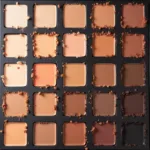Bees are essential pollinators, playing a crucial role in our ecosystem. Understanding their preferences, including their favorite colors, can be beneficial for gardeners and nature enthusiasts alike. While bees can’t see the world in the same way humans do, they are attracted to a specific spectrum of colors.
Do Bees See Color?
Bees have excellent color vision, but it differs from human vision. They can perceive colors in the ultraviolet (UV) spectrum, which is invisible to us. This ability allows them to see patterns and markings on flowers that we might miss.
The Color Spectrum Bees Prefer
While bees can see a wide range of colors, they are particularly drawn to:
- Blue: This cool color is highly attractive to bees, especially shades like violet-blue and blue-purple.
- Purple: Similar to blue, purple flowers are highly visible to bees and often contain a high concentration of nectar.
- Violet: Falling within the ultraviolet spectrum, violet flowers are particularly appealing to bees.
- Ultraviolet: While invisible to humans, many flowers have ultraviolet patterns that act as nectar guides, leading bees to their food source.
Colors Bees Don’t Like
On the other hand, bees are less attracted to:
- Red: Bees have difficulty seeing red, and it often appears black or dark to them.
- Green: As the color of foliage, green blends into the background and doesn’t stand out to bees.
Attracting Bees to Your Garden
Knowing bees’ color preferences, you can create a bee-friendly garden by planting flowers in their preferred hues:
- Blue and Purple Flowers: Consider planting lavender, borage, salvia, and lilac.
- Yellow Flowers: Although not their primary preference, bees are still attracted to some yellow flowers, such as sunflowers and coneflowers.
Beyond Color: Other Factors That Attract Bees
While color plays a significant role in attracting bees, other factors are equally important:
- Scent: Bees are highly sensitive to fragrance and are attracted to flowers with sweet, pleasant scents.
- Flower Shape: Bees have preferences for certain flower shapes that allow them to easily access nectar and pollen.
- Bloom Time: Planting flowers with different blooming periods ensures a continuous food source for bees throughout the seasons.
Conclusion
Understanding what colors bees like allows us to create environments that attract and support these essential pollinators. By planting bee-friendly flowers, we contribute to the health of our ecosystems and ensure the continued pollination of our plants. Remember, a vibrant and diverse garden benefits both bees and humans alike.
FAQs
Q: Can bees see the color red?
A: Bees have limited ability to see red and often perceive it as black or dark.
Q: What other insects are attracted to blue and purple flowers?
A: Butterflies are also attracted to blue and purple flowers, as well as hummingbirds.
Q: Do white flowers attract bees?
A: Yes, bees can see white flowers, and some white flowers have ultraviolet patterns visible to them.
Q: How can I learn more about creating a bee-friendly garden?
A: You can find helpful resources and information on the Do Ants See Color? page.
Q: What is the best time of day to see bees in my garden?
A: Bees are most active during the warmest part of the day, typically from late morning to mid-afternoon.
If you’re interested in exploring the fascinating world of color and its impact on nature, check out our articles on What Colors Do Butterfly Bushes Come In? and What Colors Are Cicadas Attracted To?.
For any assistance, please contact us at Phone Number: 0373298888, Email: [email protected], or visit our address at 86 Cau Giay, Hanoi. We have a 24/7 customer support team ready to help.
